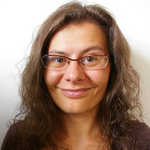IASC Network on Arctic Glaciology 2013
Posted on 10 February 2014
IASC Network on Arctic Glaciology 2013
By Allen Pope, SSI Fellow and Research Associate at National Snow and Ice Data Center in Boulder, Colorado
Highlights:
- Remote sensing and related software is gaining even more traction in the glaciology community.
- Popular software products include the Ames Stereo Pipeline and Agisoft PhotoScan, among others.
- There is agreement (within the glaciologists) in the importance of further software development training opportunities for all career stages, but especially early career researchers.
Event report:
IASC (the International Arctic Science Committee) holds an Arctic glaciology meeting every year. This is a small, informal meeting where personal connections can be built and there is ample time for in-depth discussions of not just big results, but methods, ideas, and even failed experiments. I had met many of the attendees before, but there were a few new people, including many from Canadian universities studying glaciers in the Canadian Arctic.
One of the main features of the research presented was the use of high-powered software to harness high-resolution imagery (ground, satellite, or air) to create 3D models. Of potential relevance to the SSI, I made contacts with multiple researchers using a program called the Ames Stereo Pipeline (free, and supported by NASA) to create digital elevation models from optical satellite imagery. This is especially exciting in the United States as US federally-funded researchers can freely obtain sub-meter scale images. It may be of use to those in other countries, but obtaining input imagery may be prohibitively costly. Other people were using a program can Agisoft Photoscan to create 3D maps from photos taken on the ground, by drones/UAVs, and from small fixed-wing aircraft. This is a potential tool for many because it is a relatively inexpensive, and yet largely accurate, 3D maps.
In addition, there were a range of interesting custom techniques also presented to address particular problems in glaciology. Flow models, melt models/projections, and inventory techniques are just a few examples. As with other meetings I have attended, a range of languages and frameworks is being used within the community. However, larger data sets are being used by even beginning researchers than has been the case in the past.
In addition, I was able to discuss the draft 'Policy Forum' article I am working on with Aleksandra and Mel. Those that I talked with heartily endorsed the message that was built off of the earlier “Software & Research” meeting in San Francisco. My questions for them were as to what audience this would best be directed at, potentially looking at a wider, more popular audience.
In summary, it was a fruitful meeting for information learned, connections made, and discussions had.

